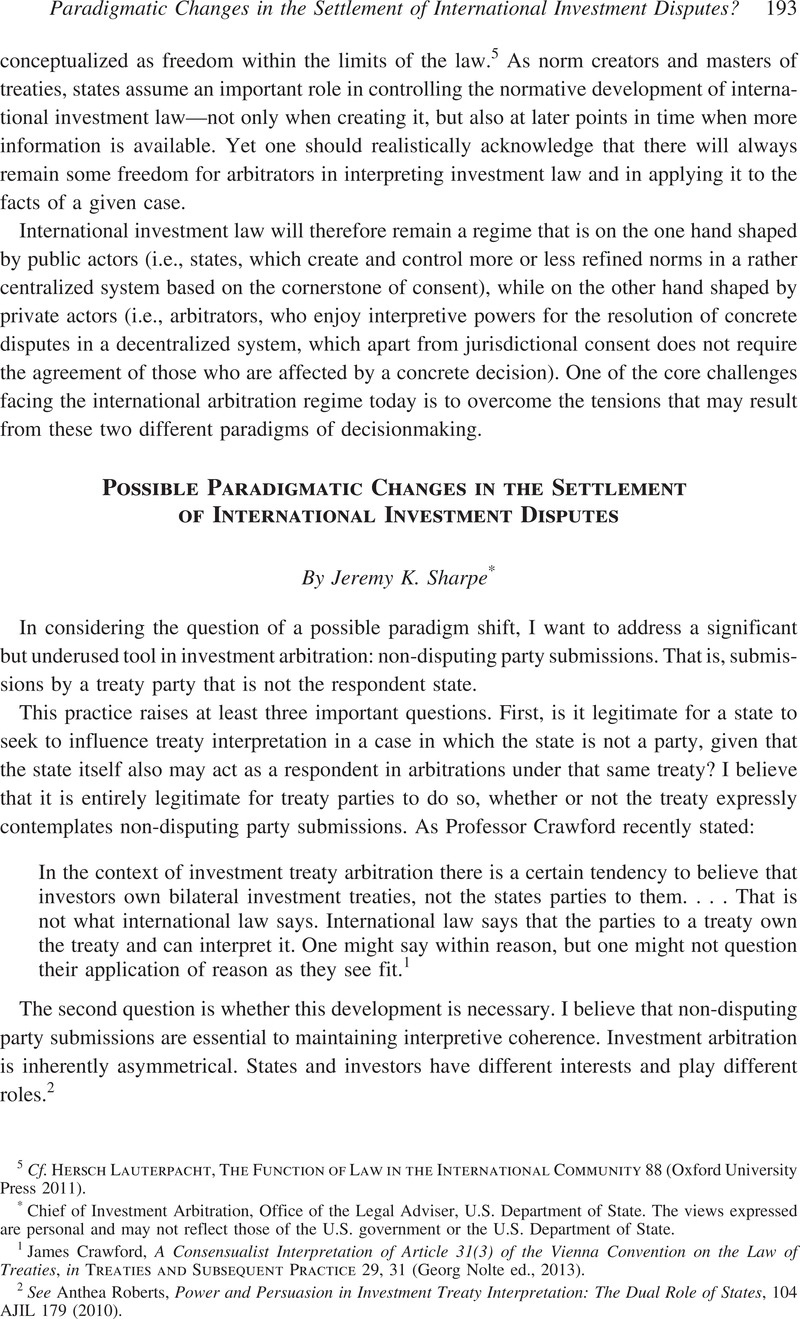No CrossRef data available.
Article contents
Possible Paradigmatic Changes in the Settlement of International Investment Disputes
Published online by Cambridge University Press: 20 January 2017
Abstract

- Type
- Paradigmatic Changes in the Settlement of International Investment Disputes?
- Information
- Copyright
- Copyright © American Society of International Law 2015
References
1 Crawford, James, A Consensualist Interpretation of Article 31(3) of the Vienna Convention on the Law of Treaties, in Treaties and Subsequent Practice 29, 31 (Nolte, Georg ed., 2013)Google Scholar.
2 See Roberts, Anthea, Power and Persuasion in Investment Treaty Interpretation: The Dual Role of States, 104 AJIL 179 (2010)CrossRefGoogle Scholar.
3 Indeed, claimants in 2013 brought 27 claims against developed states, 19 claims against developing states, and 11 claims against states with economies in transition. See UNCTAD, Recent Developments in Investor-State Dispute Settlement (ISDS), IIA Issues Note No. 1, at 2 (Apr. 2014).
4 See, e.g., Elettronica Sicula S.p.A. (ELSI) (U.S. v. Italy), 1989 I.C.J. 15 (July 20).
5 See Canadian Cattlemen v. United States, NAFTA/UNCITRAL, U.S. Reply on Preliminary Issue (stating U.S. position).
6 Vaughan Lowe, International Law 24 (2007).
7 Bethlehem, Daniel, The Secret Life of International Law, 1 Cambridge J. Int’l & Comp. L. 23, 31–32 (2012)CrossRefGoogle Scholar.
8 See Ian Sinclair, The Vienna Convention on the Law of Treaties 137 (2d ed. 1984) (“The value of subsequent practice will naturally depend on the extent to which it is concordant, common and consistent.”).
9 See Fitzmaurice, Gerald, The Law and Procedure of the International Court of Justice 1951–4: Treaty Interpretation and Other Treaty Points, 33 Brit. Y.B. Int’l L. 203, 223 (1957)Google Scholar (observing that a consistent state practice “must come very near to being conclusive as to how the treaty should be interpreted”); Patrick Daillier et al., Droit International Public 277 (8th ed. 2009) (“The expression ‘authentic interpretation’ designates that which is furnished directly by the parties, as opposed to an unauthentic interpretation, which is given by a third party.”) (author’s translation).
10 Simma, Bruno, Miscellaneous Thoughts on Subsequent Agreement and Practice, in Treaties and Subsequent Practice 46, 46 (Nolte, Georg ed., 2013)Google Scholar.
11 See Brower, Charles N. & Sharpe, Jeremy K., International Arbitration and the Islamic World: The Third Phase, 97 AJIL 643 (2003)CrossRefGoogle Scholar (discussing cases).
12 Id. at 647.


